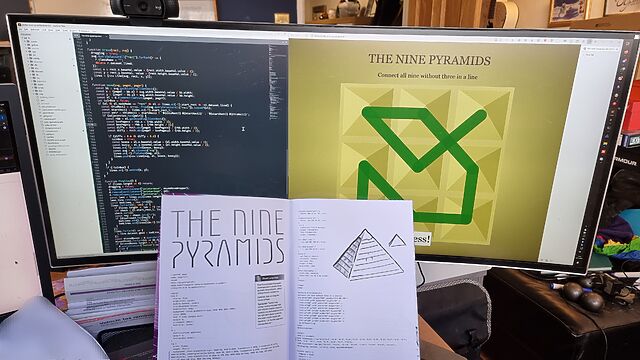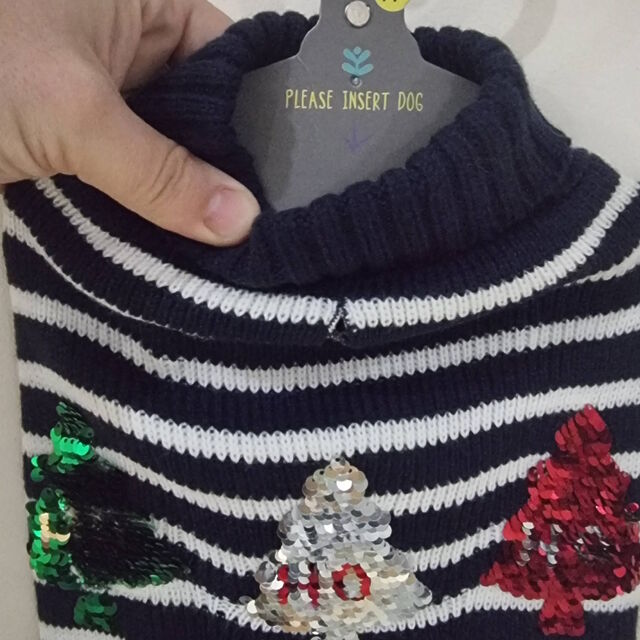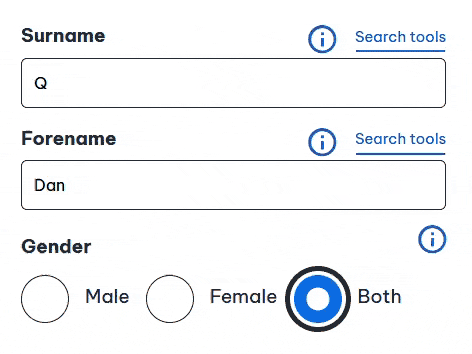Not sure I’m a fan of these new ultra-minimalist Christmas trees.
Category: Personal
BBC Sports News (without the crap)
For the last few years I’ve been running a proxy of the BBC News RSS feeds (https://bbc-feeds.danq.dev) that strips out duplicate content, non-news content, and (optionally) sports news.
This weekend, for the first time, somebody asked if it could produce an edition that included only the sports content. Which turned out to be slightly more difficult, because it’s the kind of scope-creep that my “uninterested-in-sports-news” brain couldn’t conceive that anybody would want! But I got there in the end.
If anybody’s looking for their fill of “BBC News Feeds… But Better!”, give it a look.
Woodcraft Folk statement on the exclusion of trans children from Girlguiding
This is a repost promoting content originally published elsewhere. See more things Dan's reposted.
Woodcraft Folk stands in solidarity with every trans child, young person and volunteer who faces exclusion from Girlguiding UK following the announcement on Trans inclusion.
We recognise that Girlguiding UK have taken this decision in the context of intense political pressure and legal uncertainty. However, this does not make the outcome acceptable. Young people should never bear the consequences of political disputes. All children and young people deserve respect, safety and inclusion in their youth organisations.
…
Excellent statement from Woodcraft Folk.
I was saddened to hear the news that Girlguiding will no longer accept trans girls as members. It seems to me that it would have been perfectly reasonable for them to change their articles in response to the Supreme Court silliness: instead of declaring themselves as being for the benefit of “girls and women” they could have become for the benefit of “girls, women, trans girls, and trans women”.
Yes, obviously it’s horrible that the Supreme Court’s othering decision means that people have to spell out that “by women, we mean all women, including trans women”. But that’s a thing that a charity can do. It’s perfectly reasonable for a charity to be for the benefit of multiple groups.
But no, they took the easy option.
So it’s great to see youth-supporting organisations like Woodcraft Folk make a statement like this that trans kids continue to be welcome with them. Okay, this was easier for them than for Girlguiding because Woodcraft’s articles didn’t contain any gendered language in the first place. And it’s fine that Girlguiding’s does use gendered language – it’s okay for charities to be gender-specific! – but it’s a shame that they didn’t… pardon the pun… have the balls to stand up for what’s right for all women and girls, in spite of the UK’s growing transphobia. Ugh.
Anyway: nice work, Woodcraft Folk.
Please Insert Dog
Chinese Domain Name Scam
I find a lot of these “this company is tried to usurp your brand with Chinese domain name purchases” emails in my spam folder, corresponding to my (many) domains. They’re a scam, of course: the scammer is trying to goad me into saying “No, please help protect my brand identity, I’ll pay you over the odds for these .cn domains!”
But I’ve always wondered – what happens if you reply and say “Yes, Baokang Ltd DO represent my business interests in China, please go ahead and let them register these domains.” I’d know that was a lie, and the scammer would know that was a lie (the company, if it even exists, is under their control in the first place)… but they can’t admit that they know that.
Anybody tried baiting this kind of scammer in that way before? (With the usual scambaiting precautions, of course!)
Dithering – Part 1
This is a repost promoting content originally published elsewhere. See more things Dan's reposted.
I already understand how using a threshold map to perform dithering works and have even implemented dithering algorithms, and I still appreciated this amazing visual explainer which helped put it in a light I’d never considered before. A highly-recommended read, and I’ve subscribed to Damar’s RSS feed so I get to see Part 2 when it happens.
(I also enjoyed playing with the dithering experiment on his CodePen, because it turns out that the technology behind this interactive demo is as interesting as the topic being described!)
Trams Rights
HTTP is not simple
This is a repost promoting content originally published elsewhere. See more things Dan's reposted.
…
HTTP/1 may appear simple because of several reasons: it is readable text, the most simple use case is not overly complicated and existing tools like curl and browsers help making HTTP easy to play with.
The HTTP idea and concept can perhaps still be considered simple and even somewhat ingenious, but the actual machinery is not.
[goes on to describe several specific characteristics of HTTP that make it un-simple, under the headings:
- newlines
- whitespace
- end of body
- parsing numbers
- folding headers
- never-implemented
- so many headers
- not all methods are alike
- not all headers are alike
- spineless browsers
- size of the specs
]
I discovered this post late, while catching up on posts in the comp.infosystems.gemini newsgroup, but I’m glad I did because it’s excellent. Daniel Stenberg is, of course, the creator of cURL and so probably knows more about the intricacies of HTTP than virtually anybody (including, most-likely, some of the earliest contributors to its standards), and in this post he does a fantastic job of dissecting the oft-made argument that HTTP/1 is a “simple” protocol; based usually upon the argument that “if a human can speak it over telnet/netcat/etc., it’s simple”.
This argument, of course, glosses over the facts that (a) humans are not simple, and the things that we find “easy”… like reading a string of ASCII representations of digits and converting it into a representation of a number… are not necessarily easy for computers, and (b) the ways in which a human might use HTTP 0.9 through 1.1 are rarely representative of the complexities inherent in more-realistic “real world” use.
Obviously Daniel’s written about Gemini, too, and I agree with some of his points there (especially the fact that the specification intermingles the transfer protocol and the recommended markup language; ick!). There’s a reasonable rebuttal here (although it has its faults too, like how it conflates the volume of data involved in the encryption handshake with the processing overhead of repeated handshakes). But now we’re going way down the rabbithole and you didn’t come here to listen to me dissect arguments and counter-arguments about the complexities of Internet specifications that you might never use, right? (Although maybe you should: you could have been reading this blog post via Gemini, for instance…)
But if you’ve ever telnet’ted into a HTTP server and been surprised at how “simple” it was, or just have an interest in the HTTP specifications, Daniel’s post is worth a read.
How Online Privacy Has Been Championed by Dreamwidth
This is a repost promoting content originally published elsewhere. See more things Dan's reposted.
…
I’m writing up this information because Dreamwidth’s legal advocacy work has been largely underrecognized. I have not seen a scrap of mainstream news coverage out there that delves into the unique role that Dreamwidth has played in the NetChoice lawsuits, and in a tech news landscape that inspires so much resignation and despair, I think people deserve to know about how Dreamwidth is putting up a fight. Not only does Dreamwidth refuse to engage in intrusive tracking, it’s proactively participating in lawsuits against state governments that try to force its hand. For all that many lawmakers are trying to make the web worse, Dreamwidth is leveraging itself as proof that a better web is possible.
…
If your mental model of Dreamwidth is “it’s like LiveJournal, but…” then you owe it to yourself to read Coyote’s excellent explanation of how Dreamwidth is so much more: a beacon of privacy-centric and censorship-resistant blog hosting in a world that increasingly seems at-best uninterested and at-worst actively hosting to such things.
That it’s not for me personally (I’m more a selfhost type) doesn’t mean it’s not a great choice for you: it’s got solid free and reasonably-priced premium tiers and all the kinds of features you’d expect from a service live LiveJournal, or Tumblr, or Medium… but without all of the antifeatures that come with each of those.
And yeah, they’re on the side of the good guys:

Coyote also wrote the excellent You Can Make A Website, if you’re looking for further reading from the same author.
Note #27692
Can it perhaps be time that we stop saying “ethical non-monogamy”?
Nobody feels the need to say “ethical monogamy”; monogamous folks are given the benefit of the doubt and assumed to be practicing a relationship ethically.
I feel like polyamory, open relationships, relationship anarchy and other forms of non-monogamy are now sufficiently accessible to popular culture that we can drop the word “ethical” and still be understood. (Ideally we do so before it starts to look like virtue-labelling.)
The perils of doors in gamedev
This is a repost promoting content originally published elsewhere. See more things Dan's reposted.
Recent discussion about the perils of doors in gamedev reminded me of a bug caused by a door in a game you may have heard of called “Half Life 2”. Are you sitting comfortably? Then I shall begin.

…
What is meant to happen is a guard (spoiler alert – it’s actually Barney in disguise) bangs on a door, the door opens, he says “get in”, and then the game waits for you to enter the room before the script proceeds.
But in this case the door sort of rattled, but didn’t open, and then locked shut again. So you can’t get in the room, and the gate closed behind you, so you can’t go do anything else. The guard waits forever, pointing at the locked door, and you’re stuck.
…
If you watch the video, when the door unlocks and then opens, there’s a second guard standing inside the room to the left of the opening door. That guard is actually standing very slightly too close – the very corner of his bounding box intersects the door’s path as it opens. So what’s happening is the door starts to open, slightly nudges into the guard’s toe, bounces back, closes, and then automatically locks. And because there’s no script to deal with this and re-open the door, you’re stuck.
…
So this kicked off an even longer bug-hunt. The answer was (as with so many of my stories) good old floating point. Half Life 2 was originally shipped in 2004, and although the SSE instruction set existed, it wasn’t yet ubiquitous, so most of HL2 was compiled to use the older 8087 or x87 maths instruction set. That has a wacky grab-bag of precisions – some things are 32-bit, some are 64-bit, some are 80-bit, and exactly which precision you get in which bits of code is somewhat arcane.
…
Amazing thread from Tom Forsyth, reflecting on his time working at Valve. The tl;dr is that after their compiler was upgraded (to support the SSE instruction sets that had now become common in processors), subsequent builds of Half-Life 2 became unwinnable. The reason was knock-on effects from a series of precision roundings, which meant that a Combine security guard’s toe was in a slightly wrong place and the physics engine would bounce a door off him.
A proper 500-mile-email grade story, in terms of unusual bugs.
DOCTYPE
This weekend, I received my copy of DOCTYPE, and man: it feels like a step back to yesteryear to type in a computer program from a magazine: I can’t have done that in at least thirty years.

So yeah, DOCTYPE is a dead-tree (only) medium magazine containing the source code to 10 Web pages which, when typed-in to your computer, each provide you with some kind of fun and interactive plaything. Each of the programs is contributed by a different author, including several I follow and one or two whom I’m corresponded with at some point or another, and each brings their own personality and imagination to their contribution.
I opted to start with Stuart Langridge‘s The Nine Pyramids, a puzzle game about trying to connect all nodes in a 3×3 grid in a continuous line bridging adjacent (orthogonal or diagonal) nodes without visiting the same node twice nor moving in the same direction twice in a row (that last provision is described as “not visiting three in a straight line”, but I think my interpretation would have resulted in simpler code: I might demonstrate this, down the line!).

Per tradition with this kind of programming, I made a couple of typos, the worst of which was missing an entire parameter in a CSS conic-gradient() which resulted in the
majority of the user interface being invisible: whoops! I found myself reminded of typing-in the code for Werewolves and
Wanderer from The Amazing Amstrad Omnibus, whose data section – the part most-liable to be affected by a typographic bug without introducing a syntax error – had
a helpful “checksum” to identify if a problem had occurred, and wishing that such a thing had been possible here!
But thankfully a tiny bit of poking in my browser’s inspector revealed the troublesome CSS and I was able to complete the code, and then the puzzle.
I’ve really been enjoying DOCTYPE, and you can still buy a copy if you’d like one of your own. It manages to simultaneously feel both fresh and nostalgic, and that’s really cool.
Male Surname?
This form dynamically changes the labels for the Surname and Forename field based on the value of the Gender field. Wut?
Because a Male Surname is totally distinct and nothing like a Female Surname, I guess?!?
SVGs that feel like GIFs
This is a repost promoting content originally published elsewhere. See more things Dan's reposted.
The moving image below is only 49Kb and has an incredibly high resolution.
It’s similar to a GIF but instead of showing moving images, it shows moving SVGs! The best part: Github supports these in their README.md files!
…
Got to admit, this is really cool and something I can see myself using a lot. So I installed the prerequisites:
brew install asciinemanpm install -g svg-term-cli
Then I gave it a go. I needed to use asciinema rec -f asciicast-v2 myfile.cast to record my screen into Asciinema‘s version 2 format,
because the new version 3 format isn’t yet supported by svg-term-cli (but there is at least an asciinema
convert command if you record in the “wrong” one).
Then I ran cat myfile.cast | svg-term --out myfile.cast.svg to convert that terminal recording into an SVG: I happened to be in a directory containing the source code of FreeDeedPoll.org.uk, so recorded myself running an 11ty development server with npm serve:
Amazing stuff.
Happy Polyamory Day 2025
Happy Polyamory Day y’all. (Plus max props to Petra without whom I’d have forgotten about it, like most years.)
Closest thing I did to celebrating it was going out to the pub last night for beer and food with my metamour, while our partner-in-common took our kids to see a film. Polyfam life isn’t always glamorous; but it is full of love.





